What is a Project Management Database?

You're managing multiple promising projects with your team, and excitement is high. Still, your projects lose steam along the way – not because the team lacks skill, but because it’s hard to stay aligned when work lives in too many places.
This isn't surprising, as according to the 2023 PMO Insight Report, only 47% of projects are considered successful, often due to poor communication and lack of visibility. But what if there were a central system, a project management database – that could address all these issues by providing a unified platform for tasks, deadlines, communication, and progress tracking?
As a product and project managers, you need tools that help your team work better together and stay on the same page to make informed decisions.
 The importance of a project management database
The importance of a project management databaseIn this blog, you’ll learn what a project management database is, its must-have features, and when it’s time to adopt one. We’ll also talk about how a project management tool, specifically Meegle, goes beyond tracking what needs doing by serving as a central database that captures how work gets done.
It does this through SOP-driven workflows – giving teams consistent, reusable processes that reduce errors and make scaling easier. So what exactly makes a project management database so valuable for teams like yours? Let's start with the basics.
Suggested read: 👉What is Project Management? The Complete Guide
What is a project management database?
A project management database is a centralized system that stores, organizes, and manages all project tasks and related data. Unlike spreadsheets or sticky notes that can become hard to manage as projects grow, a project management database brings project plans, tasks, timelines, resources, communication, and documents together in one place, making it easy to track tasks and stay on top of details.
For example, you need to launch a new payment gateway feature for your e-commerce app to accommodate the rush that upcoming Black Friday Sale will bring. This involves coordinating multiple teams – backend developers working on API integration, UX designers refining the payment flow, and marketers preparing campaign assets, on a tight, non-negotiable timeline.
A project management database brings all timelines, tasks, and dependencies into a single view (e.g., a Kanban board), so you can instantly see that the API work is 80% done, design mockups are pending approval, and marketing is waiting on final screenshots from developers.
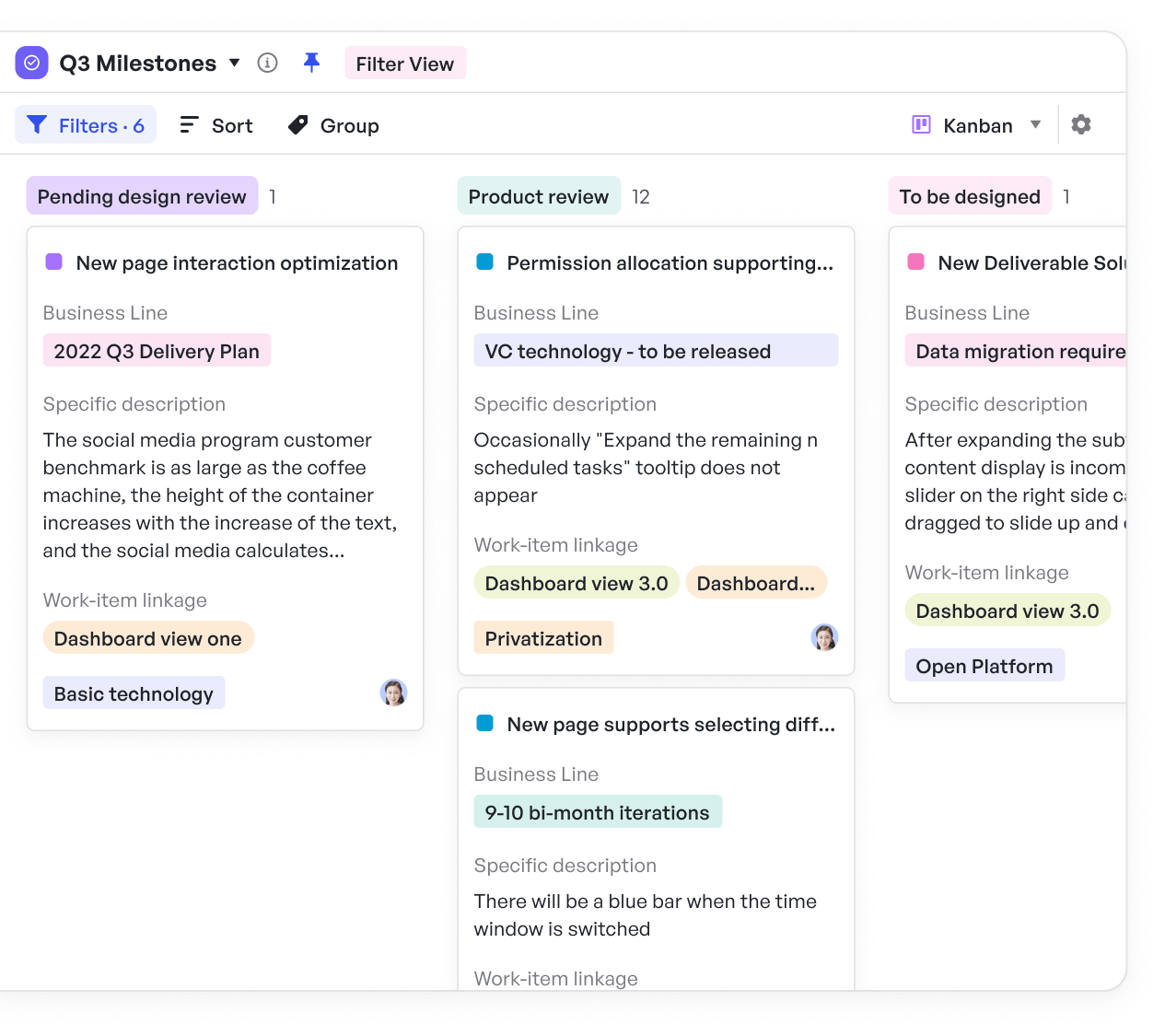 Kanban View on Meegle
Kanban View on MeegleNow that you have visibility into each step of the project, you can efficiently prepare from any unforeseen impediment, before it derails your launch plans.
Types of project management databases
Here are few types, each with a specific role to improve your work:
| Type | Purpose | Use Case or Industry |
|---|---|---|
| Task management and deliverable tracking | Organizes assignments, due dates, and progress. | Software development (e.g., sprint planning) |
| Project documentation | Stores plans, guides, and reports for easy access. | Marketing (e.g., campaign plans) |
| Issue and bug tracker | Logs problems and tracks fixes to stay on course. | Tech (e.g., resolving software bugs) |
| Team directory and role map | Lists team members and their responsibilities. | Cross-functional teams (e.g., product launches) |
| Risk register | Tracks potential risks and mitigation plans. | Construction (e.g., safety planning) |
| Cross-functional dependency tracker | Manages tasks that rely on multiple teams. | Product development (e.g., design-to-dev handoff) |
To make sense of your project data across these different types, you need a project management tool, and there is no better option than Meegle. It is both powerful and easy to use, unlike other complex tools like Microsoft Project.
Meegle offers a host of features that function as a project management database, designed to bring structure, clarity, and real-time coordination to your team's work.
- Visual workflow: Map out tasks and processes, like creating a timeline for an app launch, so everyone knows the next step.
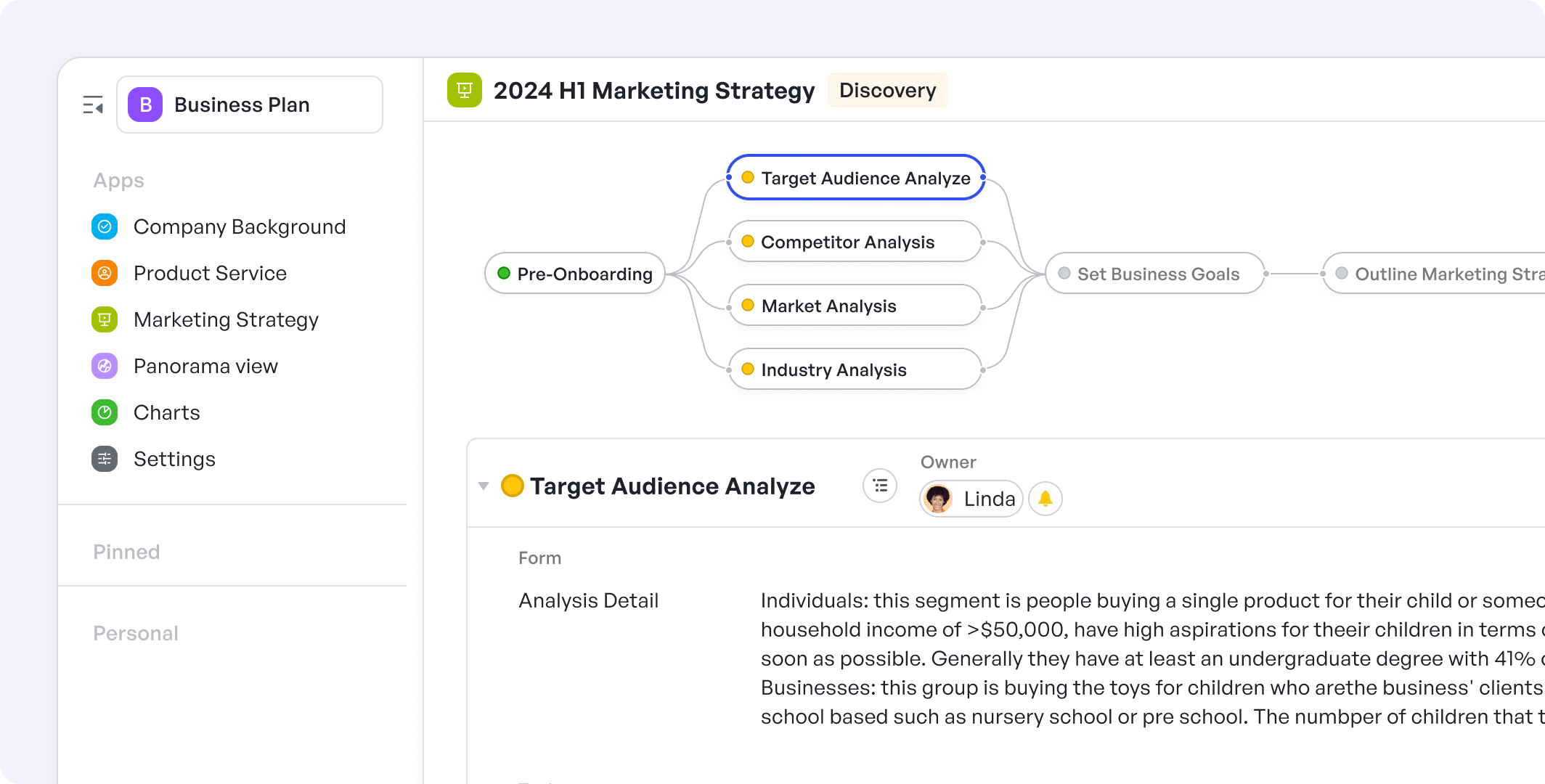 Visual workflow
Visual workflow- Customizable fields: Add specific data, such as project costs, to suit your project requirements.
- Real-time updates: Reflect changes as they happen – when a task is reassigned, priorities are updated automatically, and the right team members are notified immediately.
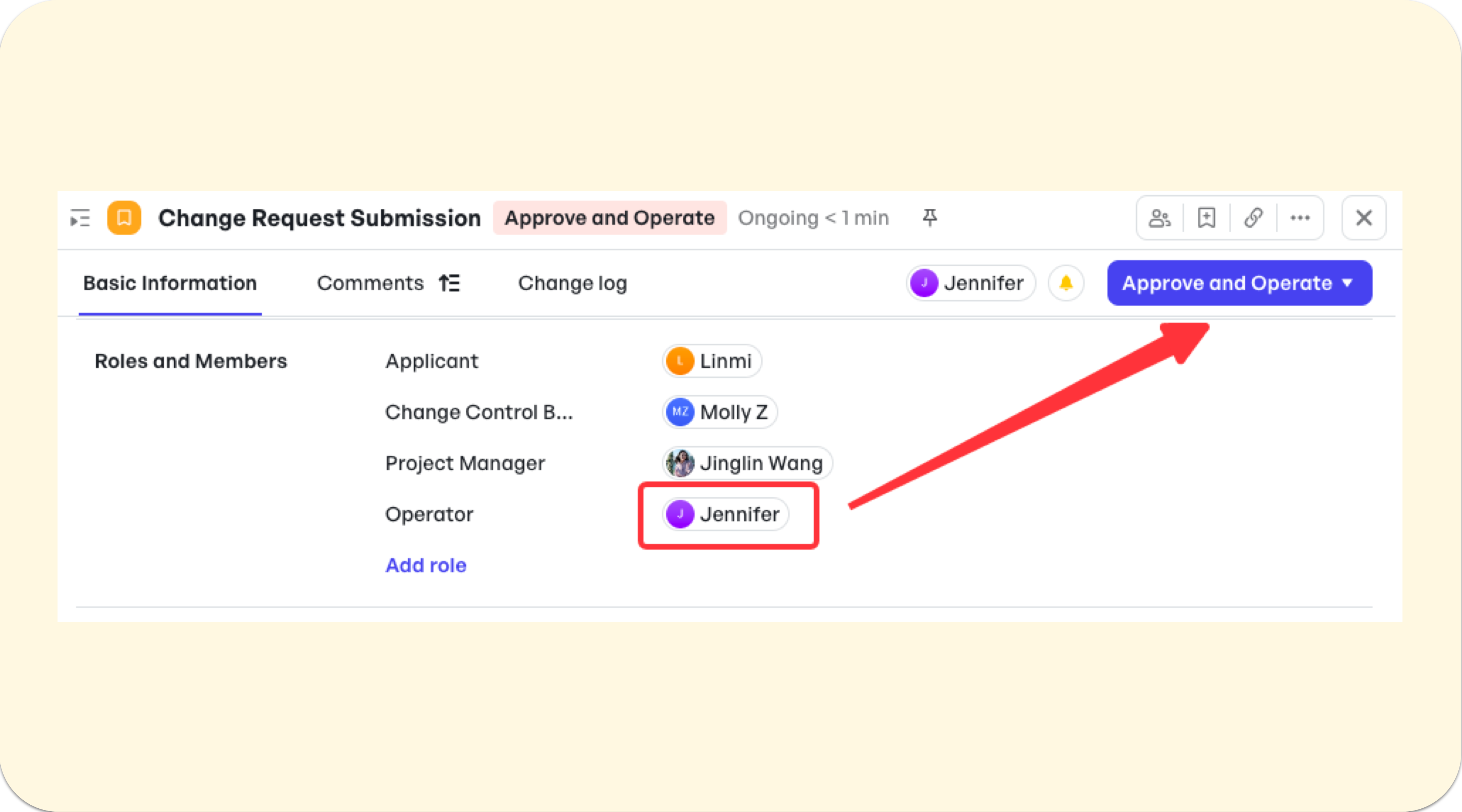 Change request submission, Meegle
Change request submission, MeegleWith Meegle, you can streamline task management and store guides, so your project stays organized and on course.
Now, let's discuss what you should look for in any project management database solution to ensure it meets your team's requirements.
Final checklist: What to look for in a project management database
Use this checklist to evaluate whether a project management database can truly support your team’s workflow, now and as you grow.
 Key features of an effective project management database
Key features of an effective project management database- Centralized data storage A single space to manage all project info and track progress, so you're not wasting hours chasing down the latest version of the design spec or marketing plan during crunch time.
- Customizable fields Add project-specific data like client deadlines, sprint stages, or budget trackers. This ensures your dashboard reflects what actually drives results, like campaign performance or feature delivery.
- Real-time updates and task dependencies Get instant visibility into changes, like a bug reported days before launch, and see how it impacts downstream tasks. This allows faster decision-making and helps you reallocate resources and update stakeholders proactively.
 Delay label in Meegle
Delay label in Meegle- Collaborative tools Features like in-platform comments or action controls reduce email clutter and simplify communication. It works as a shared discussion space where developers and marketers can collaborate without losing context.
 Action control
Action control- Visual workflow builder Node-based interfaces help teams visualize every step, from design to QA, making it easier to follow the roadmap, avoid missed tasks, and manage complex workflows clearly.
- Smart automation and triggers Automate routine actions like reminders, status changes, or rollback protocols when tasks are delayed. This helps maintain project momentum without manual oversight.
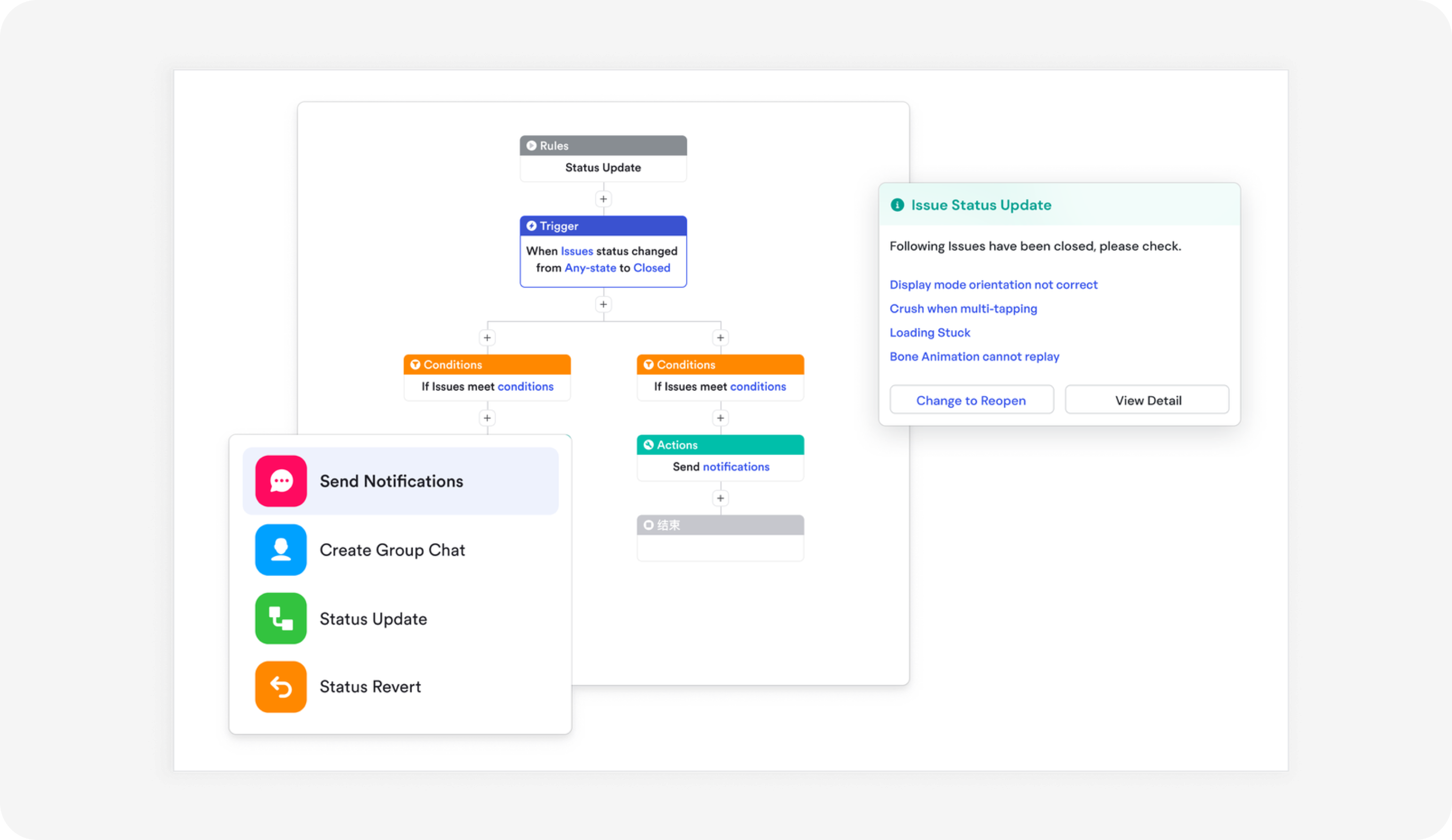 Automation processes
Automation processes- SOP documentation support Make it easy to document and reference Standard Operating Procedures, like onboarding flows or release checklists, so teams can repeat successful processes without going back to square one.
Now that you understand what makes an effective project management database, how do you know if it's time for your team to adopt one? Let's look at the tell-tale signs.
When should you consider a project management database?
 When you should consider a project management database
When you should consider a project management databaseIf you encounter any of these signs, it's time to switch to a project management database to track projects effectively and keep them on course.
1. You’re managing multiple projects with different team leads
When managing projects like a website redesign and product launch with different team leads, confusion increases as each team lead tracks updates in their own spreadsheets and email threads. But a project database centralizes all your project information, allowing you to check status updates in one spot without chasing details.
2. New hires frequently ask the same setup questions
When your newly hired content marketer asks for the fifth time how to get blog posts approved, where to find brand guidelines, and who needs to review social media content, it signals a documentation problem. This happens when processes exist only in the minds of experienced employees.
Check out Meegle's EDM Marketing template for your content production needs!
With a project management database, specifically Meegle, your content approval workflow becomes a visual flowchart with workflow automation capabilities. It shows exactly who reviews what, with attached templates and examples of previously approved content like email copy or articles.
 Link roles to tasks for a clear view of team collaboration.
Link roles to tasks for a clear view of team collaboration.New team members can independently follow the established process to reduce onboarding time from weeks to days.
3. You rely on memory or emails to track decisions
If you’re relying on manual effort, like going through emails or trying to recall why a deadline changed, you’re wasting time. For example, during a product rollout, you might forget why the testing phase was delayed.
But a project database reminds you, as it keeps decisions such as notes on why testing needed extra time logged. This way, it’s easy to review past decisions and keep everyone informed.
4. You miss manual tasks because they’re not tracked properly
It's very easy for you to miss manual tasks when you're busy – like forgetting to schedule a client review for a marketing plan. This can stall progress and hurt stakeholder trust. But then, a project management database tracks every task, so you can see if the review is assigned and due, ensuring no progress is stalled and deadlines stay on track.
5. Team communicate across different tools
If your team uses email, chat apps and other tools like sticky notes to share updates, important information can get lost. Imagine planning a feature launch where developers post updates in one app and marketers in another. It's not sustainable. A database supports project tracking by pulling communication into one place, like a shared space for launch updates, keeping everyone on the same page without multiple tools.
Suggested Read:👉Top 10 Team Collaboration Tools in 2025
If you've noticed any of these signs in your workflow, it's clear your team needs a more structured approach. Let's see why implementing a project management database solves these common workflow breakdowns and keeps your team moving forward.
Why your team needs a project management database
Each of the challenges we just discussed stems from a lack of centralized information or workflow management.
 Why your team needs a project management database
Why your team needs a project management databaseA project management database directly addresses these pain points by offering:
- Better visibility: Everyone sees project status at a glance which reduces the confusion of multiple projects with different owners.
- Improved team collaboration: Updates and files live alongside their tasks in context. Like when your designer uploads the final homepage mockup, it's immediately attached to the "Design Review" task where stakeholders can comment directly on specific elements.
You’re no longer stuck with 37 reply-all emails full of contradicting feedback—everyone’s responding to the latest version now.
- Smarter decisions: Organized, accessible data creates a clear record of decisions, replacing reliance on memory and scattered emails.
- Built for scale: Unlike spreadsheets that grow messy and hard to share, a database supports resource management to ensure no tasks are missed as your team's projects expand.
Each of these benefits works together to give you the clarity and control needed to achieve project goals and enhance project performance. Building on this, there’s one more advantage that ties it all together: SOP-driven efficiency.
With Meegle, your team goes beyond basic task tracking; you capture each step as a clear, reusable SOP. That means new hires can follow guided workflows instead of relying on word-of-mouth, so onboarding moves faster and errors happen less often.
We recommend you start by documenting one core process for repetitive tasks – this serves as the foundation. Then layer in additional SOPs and custom workflows as your work grows. This way, your business functions scale smoothly by automating routine tasks as your team grows.
How to create project management database using Meegle
Meegle is a project management software and database that stores tasks and optimizes business functions for more efficient operations, faster decision-making, and fewer errors. Meegle puts you in control, aligns with project management best practices, and scales with your changing needs.
Designed for clarity and control
- Visual workflow: Meegle’s node-driven workflow lays out project tasks as a connected sequence of steps.
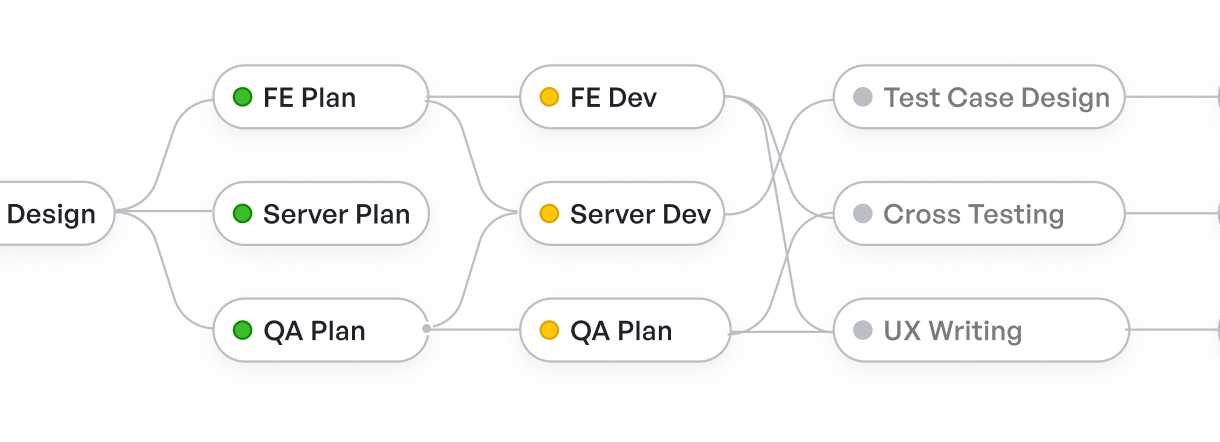 Tasks played out step-by-step with node-driven visual workflow
Tasks played out step-by-step with node-driven visual workflowSuppose your product team is launching a new mobile app. You can map out the entire release process in Meegle through its App development template.
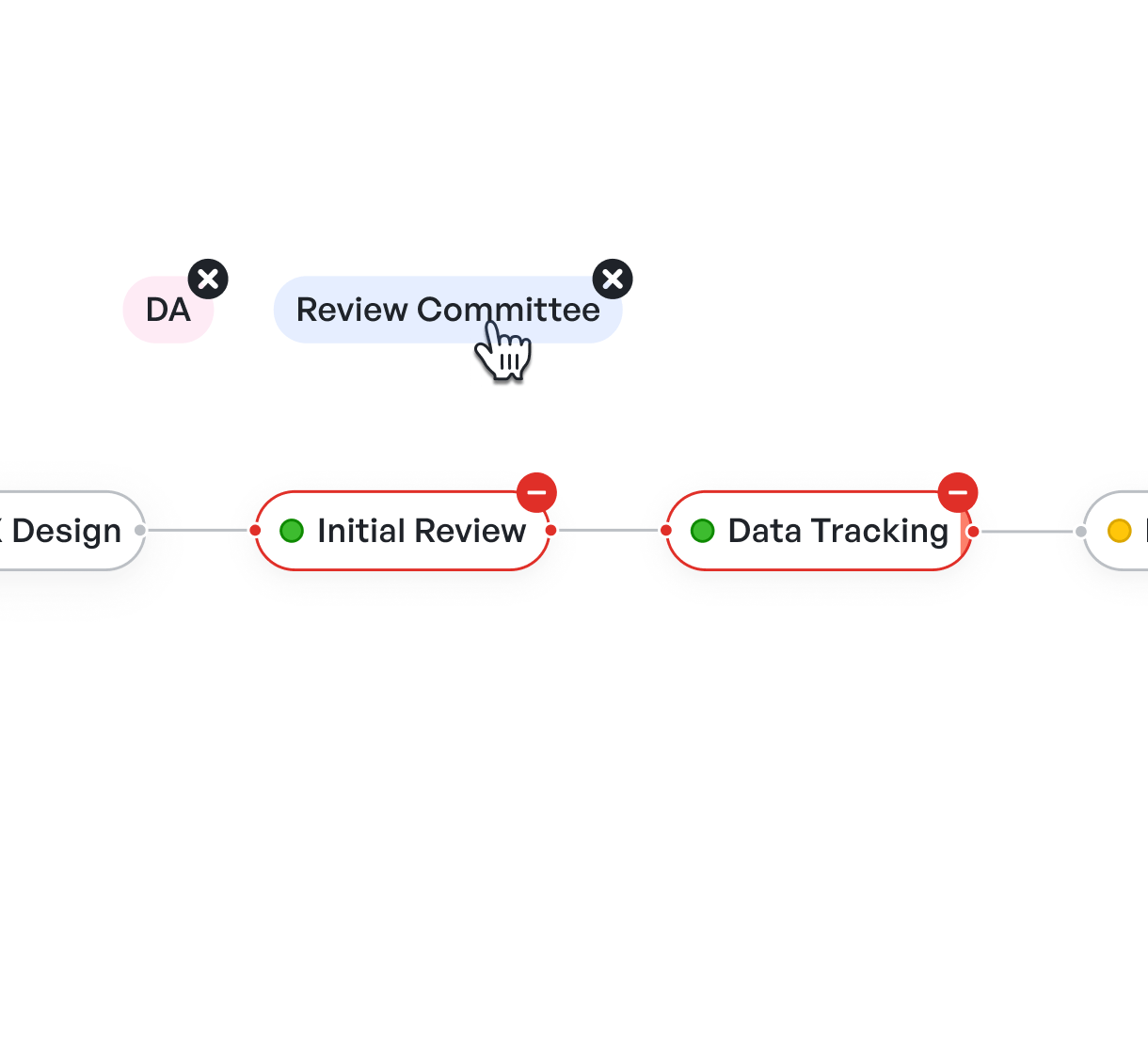 Easily modify workflow with our project management database
Easily modify workflow with our project management databaseThen, break down the launch into "design," "development," "testing," and "deployment" nodes, which allows you to instantly see if the design approval is blocking three downstream development tasks.
- Custom fields: Meegle's field management lets you create specialized data points like user stories, so our project management database fits your exact process.
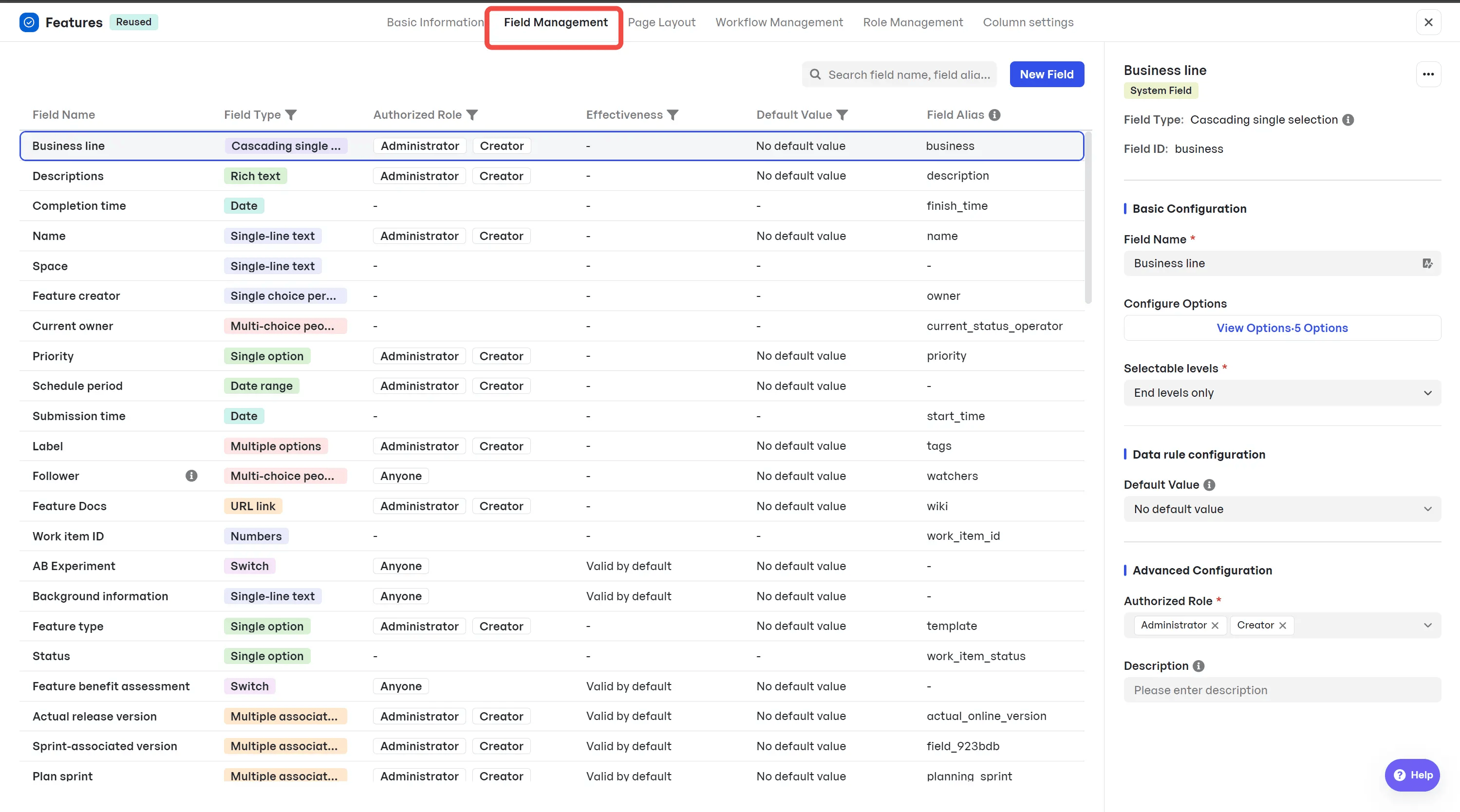 Creating custom fields with field management
Creating custom fields with field managementCustom fields can be used when launching a marketing campaign. Your team can create a "Compliance Status" dropdown, a "Project Costs" currency field, and a "Target Audience" multi-select field. Custom fields allow you to quickly filter tasks by approval status and streamline budget management by generating reporting on allocations.
- Unified workspace (Spaces): Instead of switching between apps, use Spaces to group all related work items, documents, and discussions in one screen.
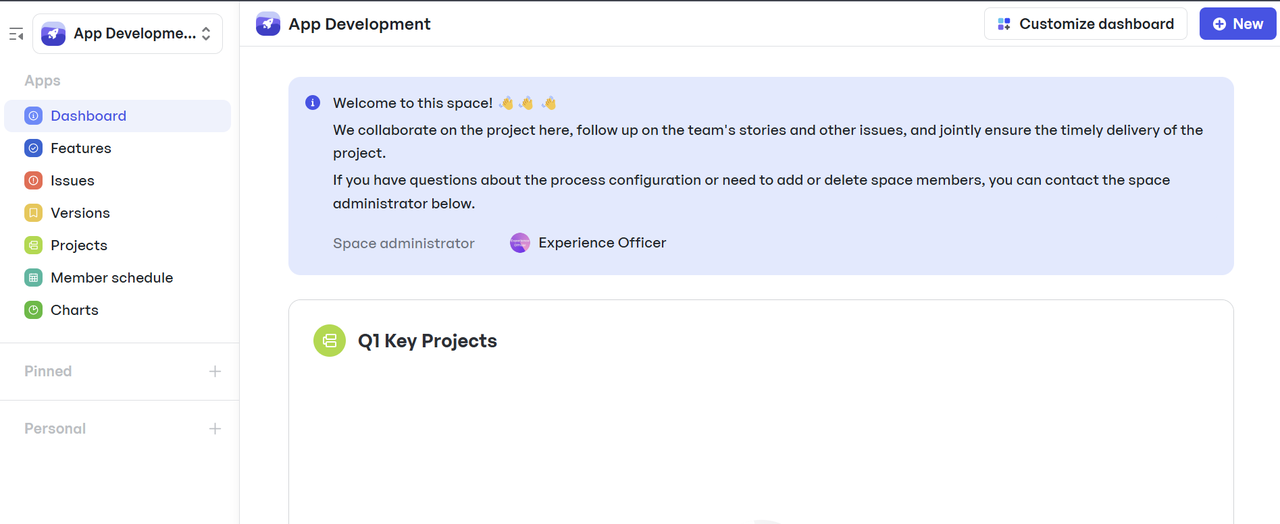 Space dashboard
Space dashboardFor example, a software implementation team creates a "Client Onboarding" Space for multiple clients where they store the statement of work, technical requirements, training documents, project costs and all implementation tasks.
When a stakeholder asks about progress, the project manager simply references back to space for all project information. Thereby reducing the need to compile this information from separate storage locations.
SOP-first execution
- Built-in SOP templates: Meegle’s library of SOP articles and templates covers everything from reporting to document control.
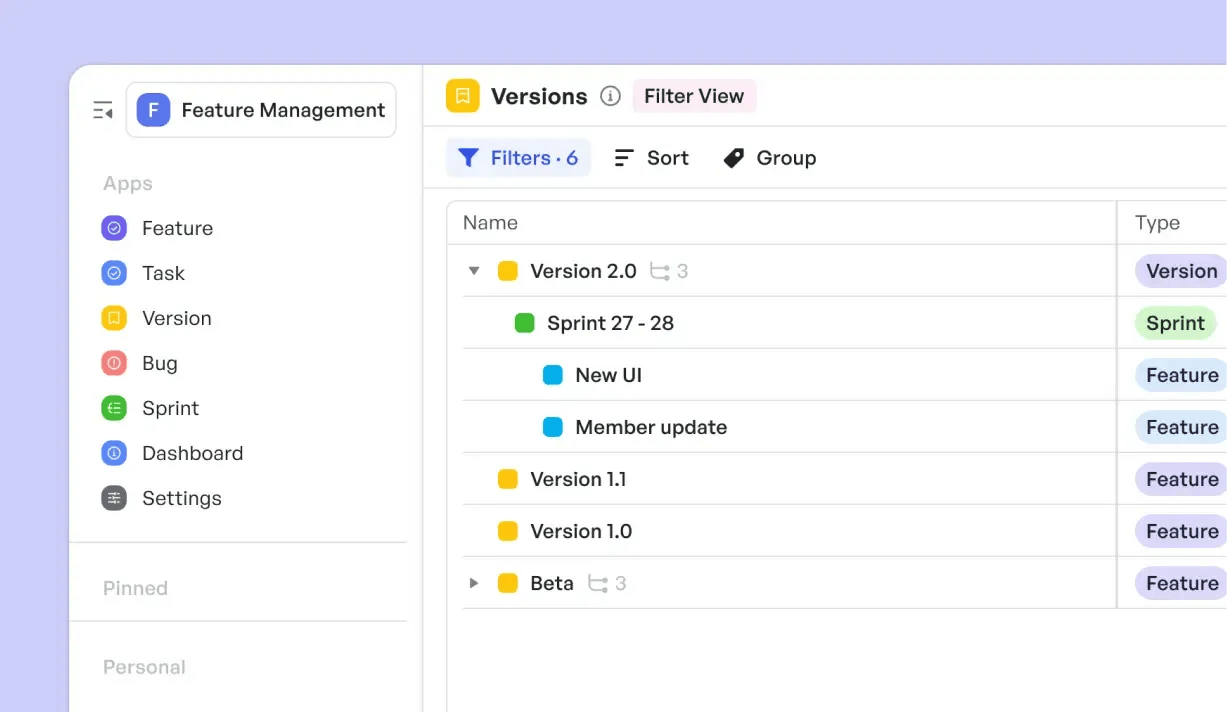 Feature management template
Feature management templatePick a premade template (like the feature management template), customize it, and make it your official process playbook, so team members follow the same steps.
- Reusable workflows: Once you’ve mapped a process, customize your workflow (you can also set up workflow automation).
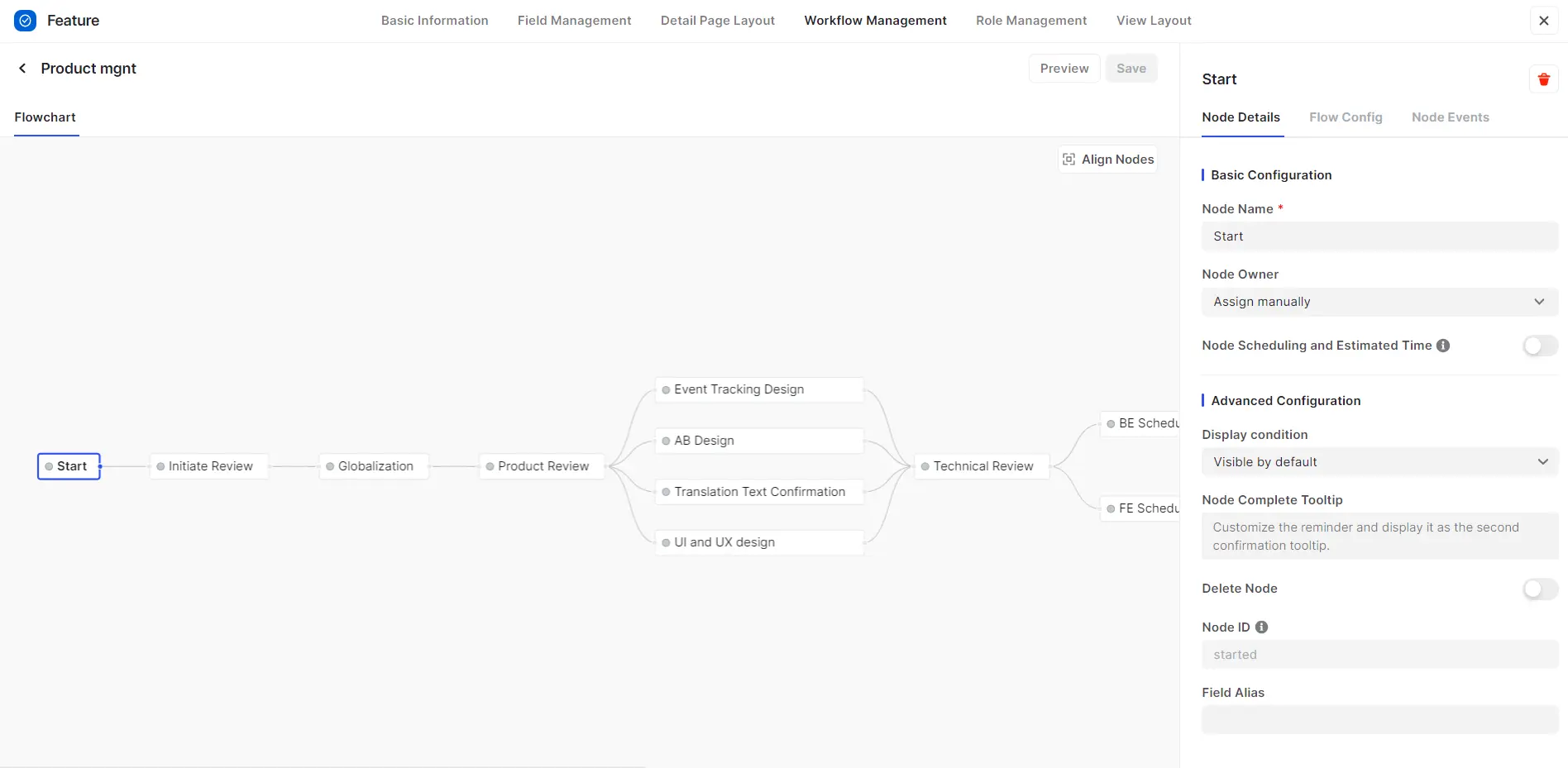 Customising a node on Meegle
Customising a node on MeegleAdjust the node name, node owner, alias, and more, until you're satisfied.
After you've added, deleted, or modified your complex workflow, make sure to save it. This will save you a lot of time when starting new projects.
- Error reduction & faster onboarding: With each SOP stored in Meegle, new hires no longer need to depend on repeated clarification from busy team members.
 Visual nodes helps new hires grasp your project steps
Visual nodes helps new hires grasp your project stepsYour guided nodes help them understand every step of the project, which reduces training time.
Living database, not static storage
- Instant task updates: When a developer finishes coding a payment system, they mark it done in Meegle, and everyone sees the update right away.
 List View on Meegle
List View on MeegleYou can switch between Tree, Kanban, Gantt, and Table View, no more waiting for emails or wondering if the task is still in progress.
- Project tracking and scheduling: Meegle’s delay labels and status tracking show if tasks, like creating marketing ads, are on track or need more time (e.g., “2 days delayed”).
 Delay labels and status tracking
Delay labels and status trackingThis motivates your team to review plans and reallocate resources, like adjusting hours to balance the team’s workload and hit the July 20 launch.
Also, the Tree View schedule management mode displays your entire project timeline as a Gantt Chart, so you see all tasks such as coding, testing, and ads, in one clear timeline without having to repeatedly check in with your team.
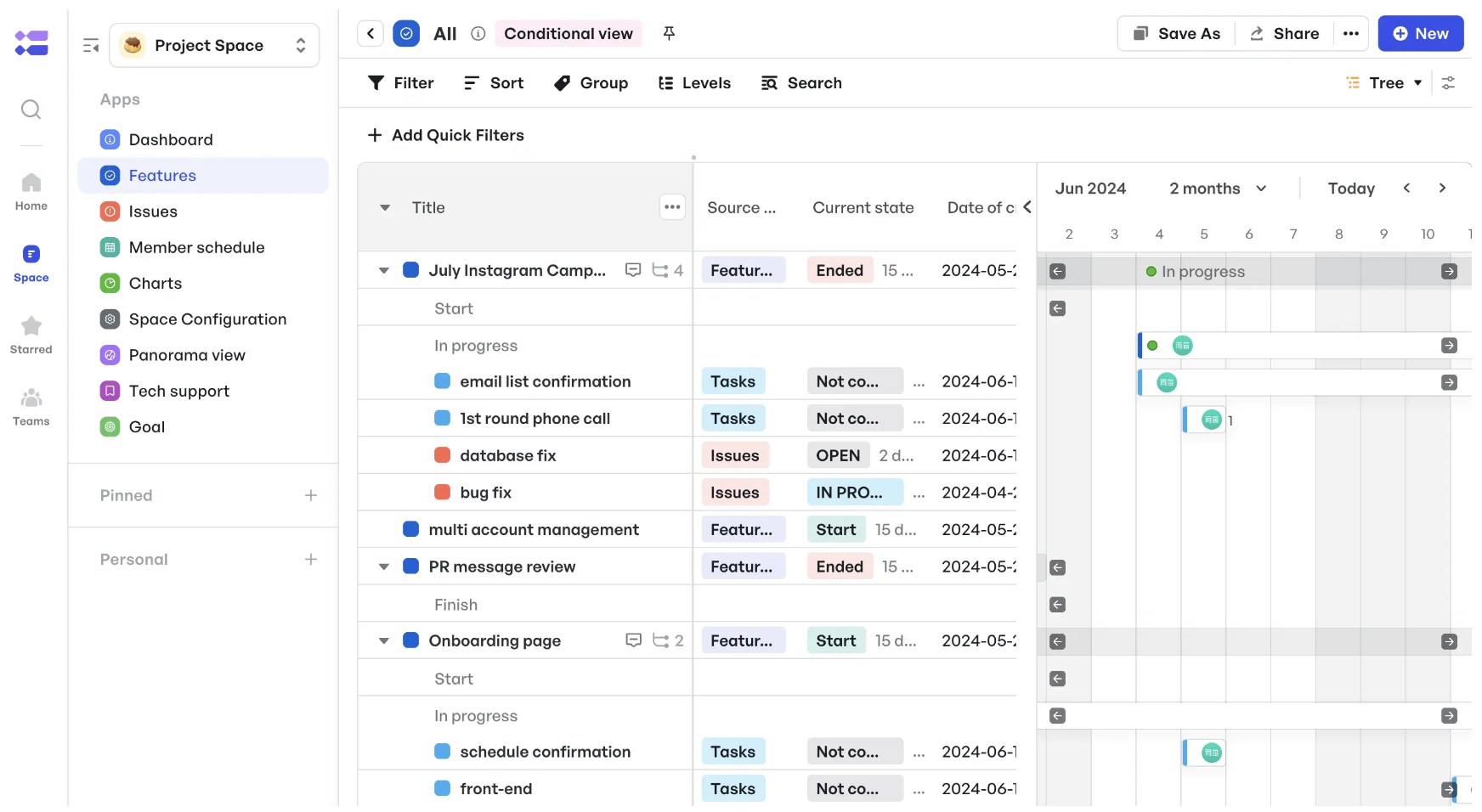 Visualise and track project progress with schedule mode
Visualise and track project progress with schedule mode- Files and chats in one place: Upload design files or client feedback directly to the task, like attaching a logo for the app’s ad campaign.
 Meegle details dashboard
Meegle details dashboardTeam members can comment right there, for example, asking, “Is this logo final?” within the platform.
Key takeaways: Project management database and its impact
TL;DR
1. The problem a project management database solves: Only 47% of projects succeed due to poor communication and visibility issues. A centralized project management database solves this by unifying tasks, deadlines, and communication in one place.
2. Signs you need a solution: If your team manages multiple projects with different owners, new hires repeatedly ask the same questions, decisions get lost in emails, manual tasks are not properly tracked, or communication is divided across tools, it's time to implement a project management database.
3. Essential features: Look for centralized data storage, customizable fields, real-time updates with task dependencies, collaborative tools, visual workflows, and smart automation to keep your projects on track and your team aligned.
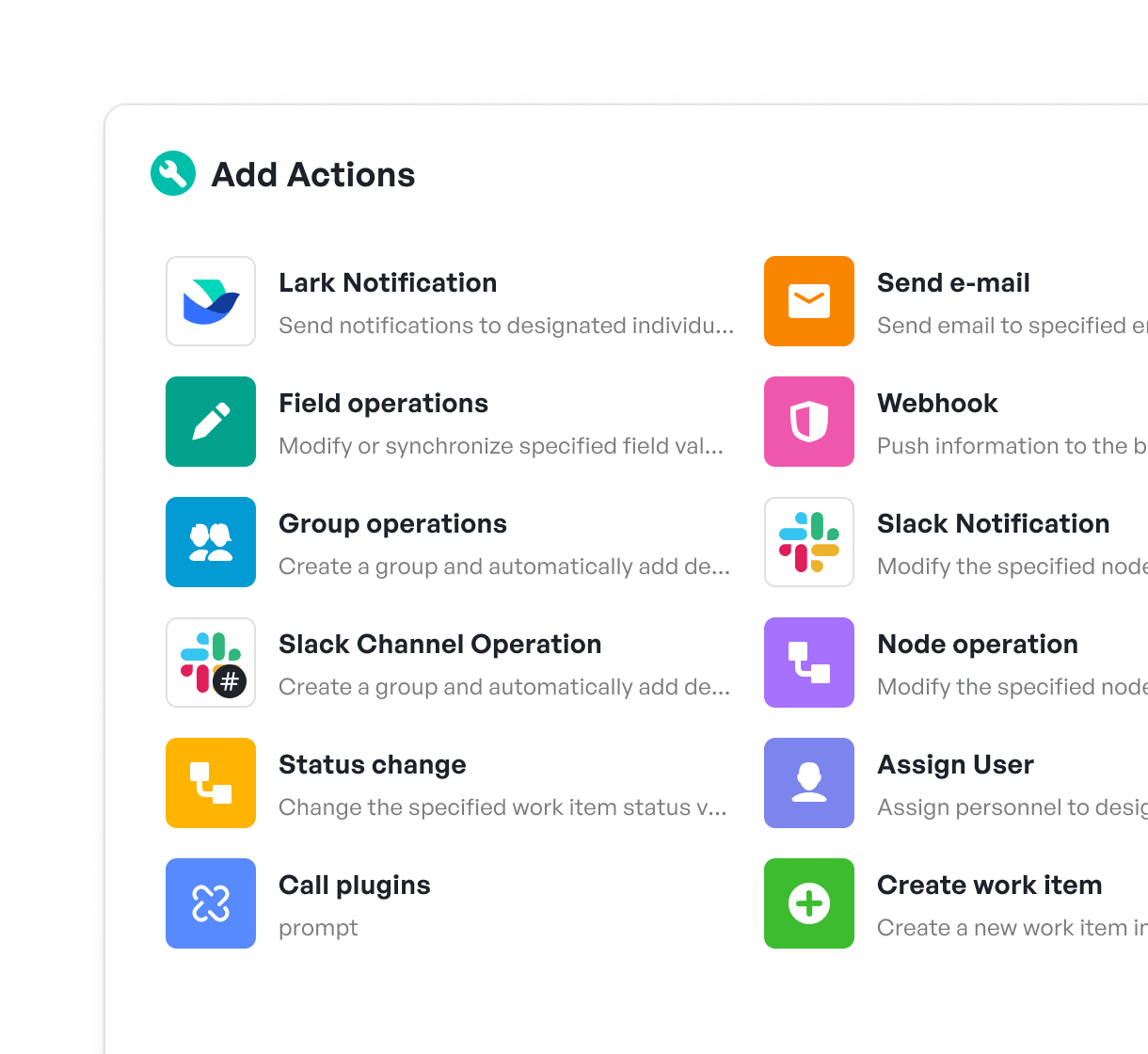 Automation options in Meegle
Automation options in Meegle4. SOP-driven efficiency: Meegle goes beyond basic task tracking by documenting how work gets done with reusable Standard Operating Procedures (SOPs) that reduce errors, speed up onboarding, and create scalable processes.
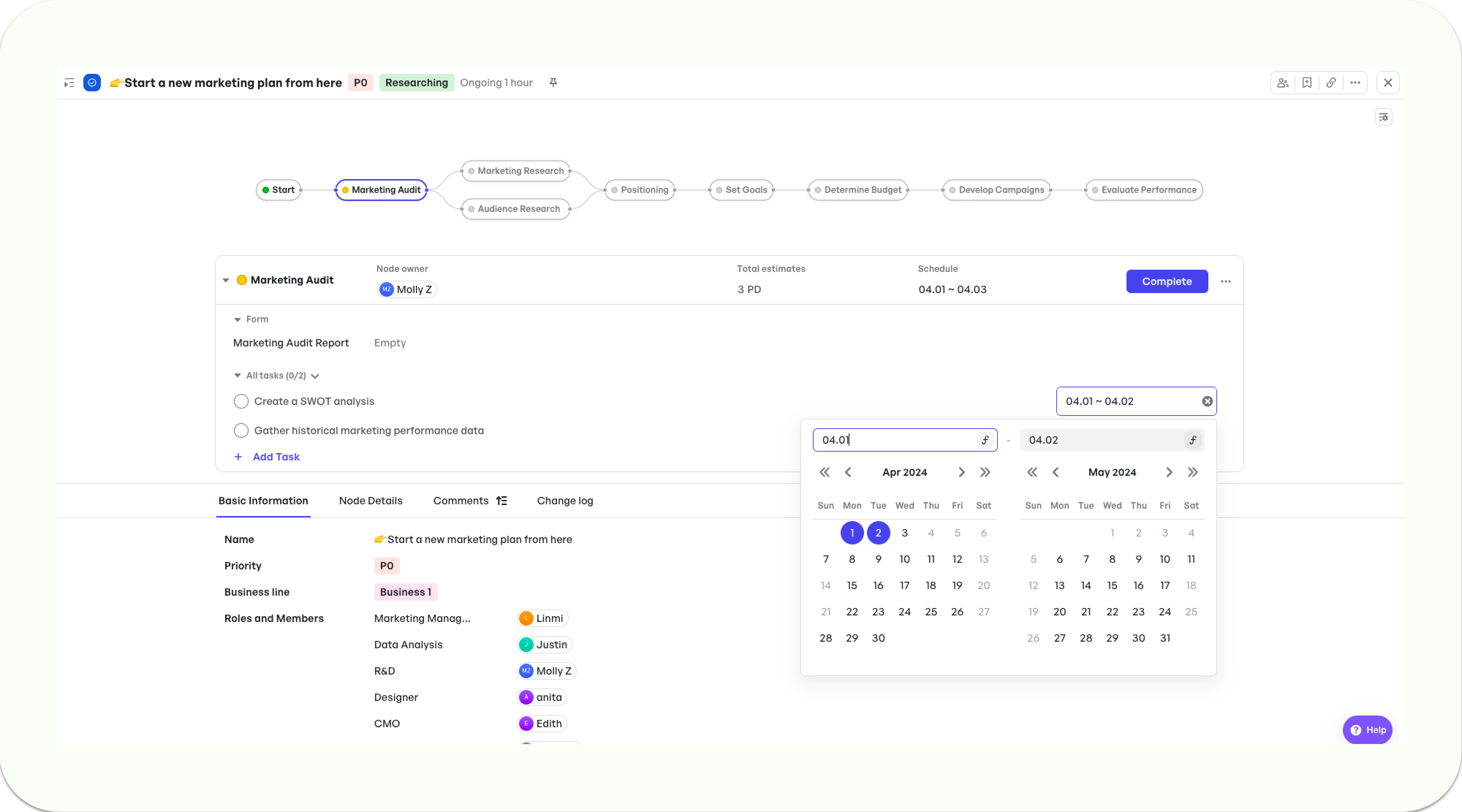 Node-driven visual workflow in Meegle
Node-driven visual workflow in Meegle5. Visual control with Meegle: Meegle's node-driven visual workflows map out projects step-by-step, making dependencies clear, while multiple Views (Kanban, Gantt, List, Table, etc) and real-time updates give teams complete visibility to prevent delays and make smarter decisions.
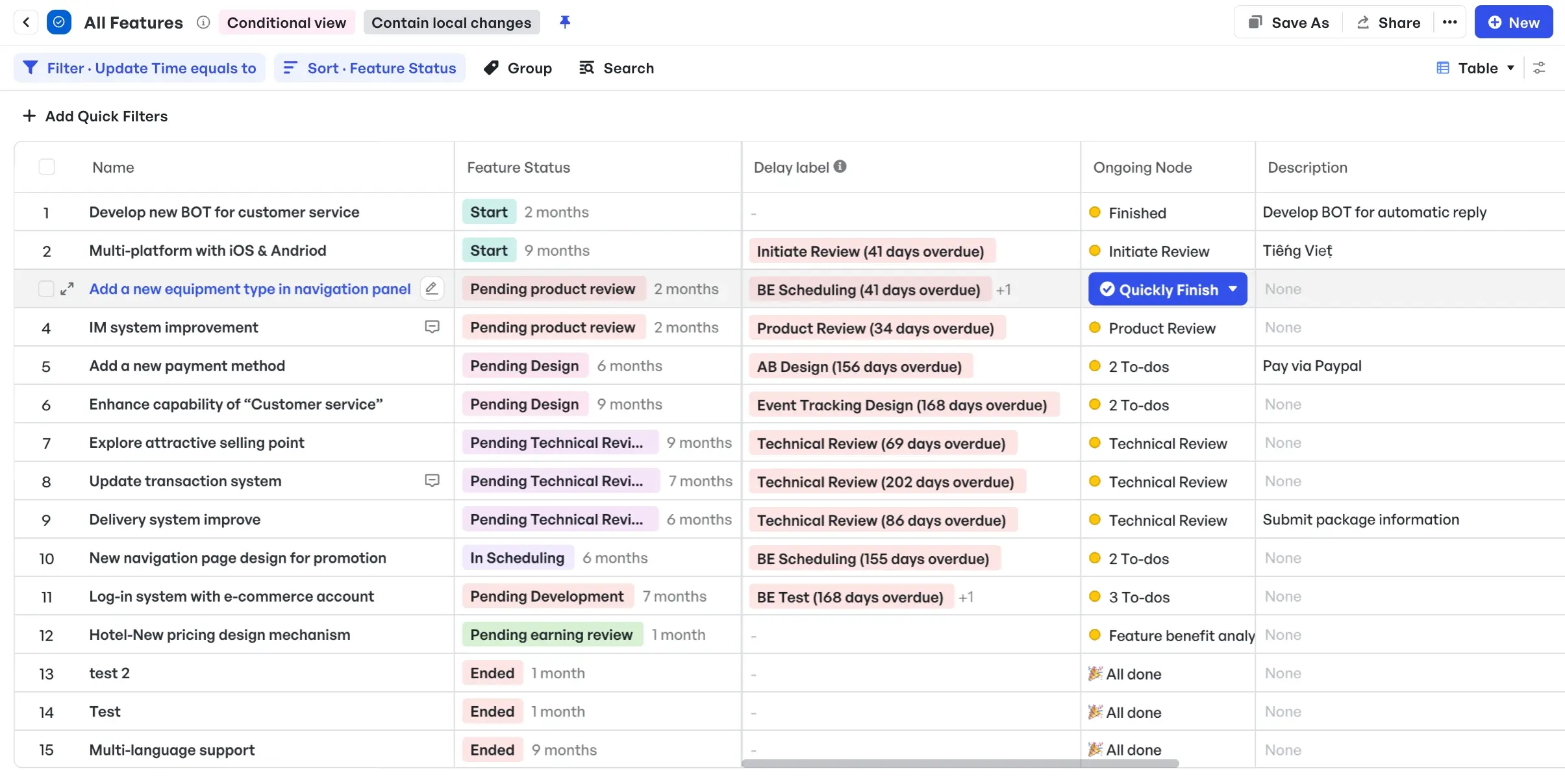 Table view in Meegle
Table view in MeegleSimplify your project updates and keep stakeholders in the loop with Meegle — your centralized project management database.
FAQ
Q. What are the best practices for implementing a project management database?
Start by defining clear goals and user roles. Choose a scalable tool, customize it to match workflows, and train your team. Regularly update data, review processes, and document SOPs to ensure long-term success.
Q. What is a project database?
A project database is a digital platform that centralizes project-related data, including tasks, documents, and schedules. It improves team coordination and visibility, reduces errors, and ensures all project information is easily accessible for efficient management.
Q. What is project management database software?
Project management database software, like Meegle, centralizes tasks, documents, and communication. It offers features like visual workflows, real-time updates, and customizable fields to streamline collaboration, track progress, and ensure projects stay on course, replacing inefficient tools like emails and spreadsheets.
Q. Which is the best project management database?
Meegle is a powerful project management database that centralizes tasks, timelines, and collaboration—helping teams stay aligned, move faster, and manage projects more efficiently.
The world’s #1 visualized project management tool
Powered by the next gen visual workflow engineRead More
Check All BlogsStart creating impactful work today



